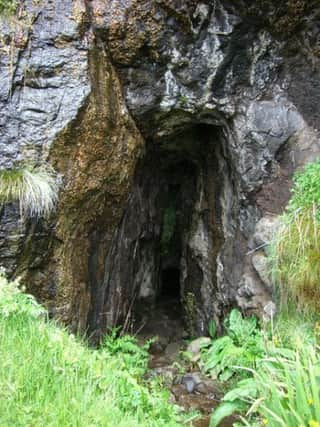Bones of clan massacre victims found in Eigg cave


Police were called in last October after tourists discovered the human remains in Francis Cave on the Isle of Eigg, the scene of a mass murder of Macdonalds in 1577 when almost all of the island population was wiped out.
Archaeologists from Historic Environment Scotland have now dated the bones to the time of the clan killings, according to a report in The Times.
Advertisement
Hide AdAdvertisement
Hide AdKirsty Owen, senior archaeology manager at HES, said the bones dated to between 1430 and 1620.
She added: “This would of course tie in with the cave being used as the resting place of most of the population of Eigg following the massacre of 1577.
“There are likely to be more bones in the cave but we are treating it like a war grave and will not pro actively look for them.”
Ms Owen said talks were now underway with islanders about the reburial of the bones, which is expected to take place by the end of the year.
Up to 400 Macdonalds are said to have been killed by their Macleod rivals in the massacre, one of the most brutal episodes of clan warfare.
It was sparked after three young Macleod men were expelled from Eigg and tied up on their boats after seemingly harassing a number of local girls.
After the men returned to the Macleod seat of power at Dunvegan on Skye, retaliation was planned with the clan organising a trip to Eigg.
Advertisement
Hide AdAdvertisement
Hide AdThe Macdonalds, aware of the approaching Macleods, hid in a large cave, now known as Massacre Cave, in the south of the island for some time.
A watchman was spotted by the Macleods as their boat was preparing to depart following a fruitless search of the island. His footprints were traced back to the cave.
The Macdonalds refused to surrender in belief the narrow entrance would be enough to protect them from their enemy.
The Macleods then lit a large fire of turf and ferns at the entrance of the cave with the smoke suffocating those inside.
Only one family managed to escape.
Almost 250 years later, Sir Walter Scott visited the cave and found human bones which were then reportedly interred, according to The Times, with a schoolboy discovering a skull at the site in 1979.
